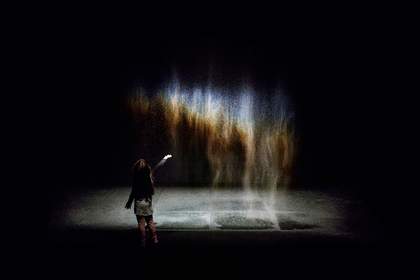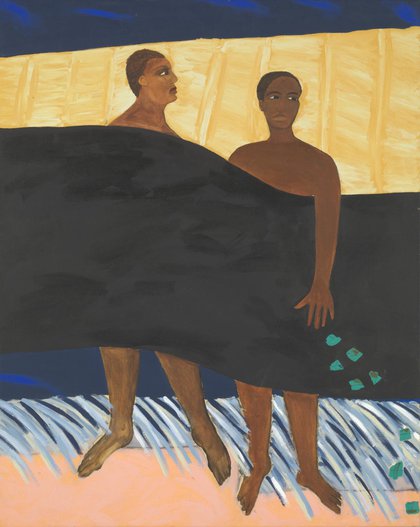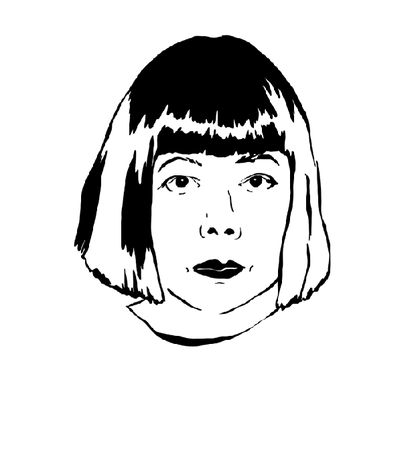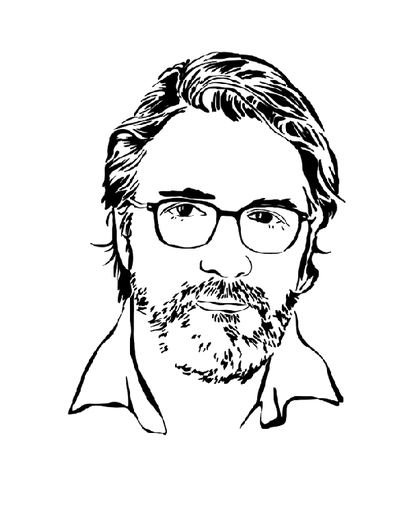
Portrait by Aurélie Garnier
Olafur Eliasson has changed what it means to be an artist. His work straddles architecture, ecology, food, education, sustainability, climate change, perception and collective activity. This may sound very serious, but there is a sense of wonder that runs through his work which helps explain why it speaks to so many different people all around the world. From his childhood in Iceland to his unlikely passion for breakdancing, his fascination with weather to the climate change activism that’s inspired world leaders, Tate curator Mark Godfrey talks us through Eliasson’s enduring influence.
For the Yes, but why? article series we teamed up with WePresent to tell the stories of Eliasson and four other game-changing artists. Here we chose three quotes from the article to give you some insight into his world.
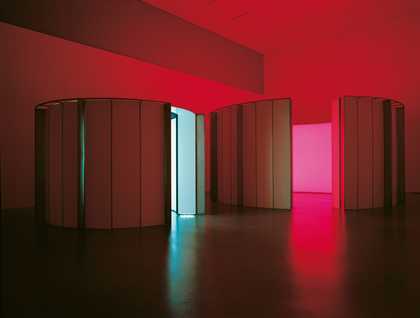
Olafur Eliasson
Your double-lighthouse projection 2002
Tate
Photos by Marcus Leith Andrew Dunkley
1. He wants you to see how it works
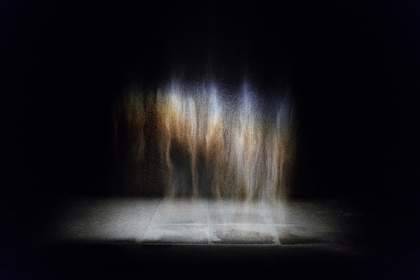
Olafur Eliasson
Beauty 1993
Photo by Anders Sune Berg
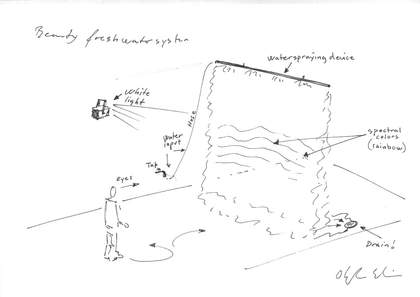
Olafur Eliasson
Sketch for Beauty 1993
You walk into a room. It's darkened. There's a fine mist falling out of a punctured hose pipe, but it's illuminated by a single light bulb. From some angles, but not from all angles, there's a rainbow. You saw the hose pipe, you saw the spotlight, you saw the things creating the rainbow even as you saw the rainbow. He called it seeing yourself sensing. You'd not just be having an experience, but conscious of having that experience. You would be made self-aware by the set-up of his work, of that experience of looking.
He was interested in the connection between an experience that might take place in a gallery and the way it might affect your behavior when you leave that gallery in relation to the world around you
Mark Godfrey
2. He changed art forever with The weather project
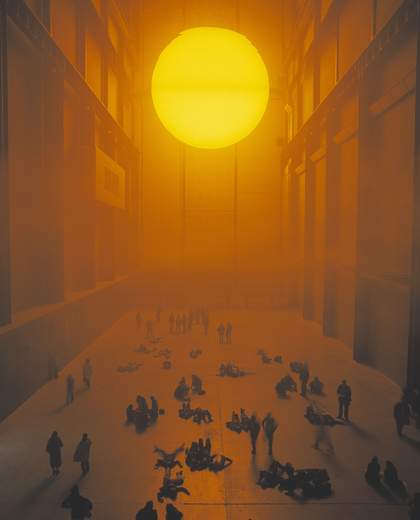
Olafur Eliasson
The weather project 2003
The weather project was one of the first major installations in the Turbine Hall. It took place in 2003 [...] and he wanted to create the illusion of a meteorological event.
He took these yellow mono-frequency lights [to create] a semi-circle of light. Immediately above that semi-circle was a mirror and the mirror stretched all the way across the top of the Turbine Hall. The semi-circle was doubled and became a circle. It became this big sun.
People would often go into the Turbine Hall and the first thing they'd do is look around and look up. Then they'd notice that there were other people reflected and then they'd try to look for themselves. Then what happened is that people began to use it in ways that no one could have expected.
Famously, this was at the time of the war of George W. Bush on Iraq. This was a very contentious war that Tony Blair joined in on, with the charge that Iraq was hiding weapons of mass destruction and we all know the history of that. People made signs protesting that war.
They made those signs by lying down with friends and forming letters in the reflection. They engaged with the language of this sculptural installation and the reflective ceiling in order to do something that really was unexpected. It really was about a group of people coming together and experiencing a work at a particular moment of history in a particular geographical place.
Mark Godfrey
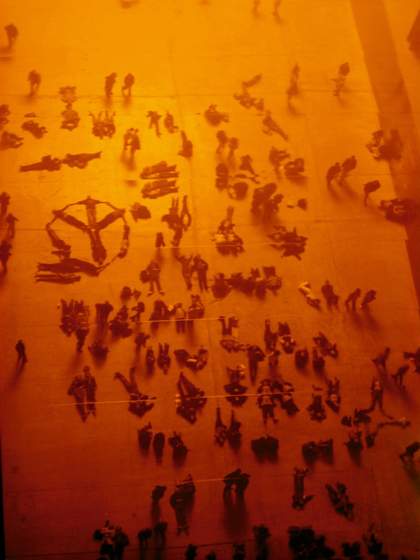
Olafur Eliasson
The weather project 2003
3. He is keen for his art to address climate change
Ice Watch involves going to Greenland and essentially harvesting chunks of ice that have melted and fallen off the glaciers. Putting them onto shipping containers, and bringing them to a site. He's done it in Paris, Copenhagen, and London.
Ice Watch [...] means two things. First of all, when he did it in Copenhagen and Paris he installed 12 blocks of ice in a circle so that it looked like the hours on a watch face. You get this idea of time ticking away [...] in relation to stopping or halting or slowing down climate change. Then 'watch' also means looking.
It's a very sculptural installation. When you wander through it you can feel the ice, you can put your ear to the ice. If you do you hear tiny little crackings of the ice cracking and you hear little bubbles that are in the ice popping. Olafur... likes to talk about the way these bubbles have fresh air in them because the bubbles are trapped air from thousands of years ago. They're the freshest air that you'll ever breathe.
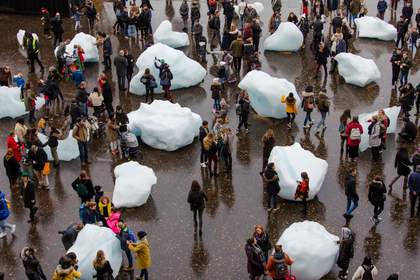
Olafur Eliasson
Ice Watch 2018
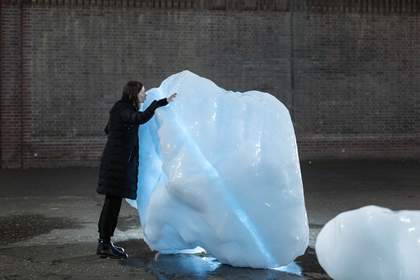
Olafur Eliasson
Ice Watch 2018
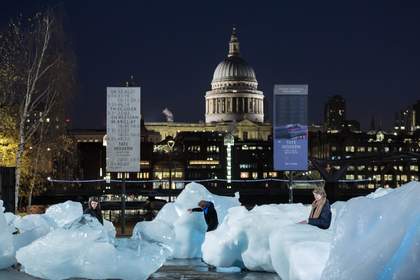
Olafur Eliasson
Ice Watch 2018
The ice is completely stunning. It's very deep blue in places. There are places where it's transparent, places where it's opaque, and as it melts over a few days the shapes change and there's these wonderful moments where it's very soft and then very angular and so on.
Ice Watch is his attempt to make this crisis of climate change tangible for people because it gives people a physical experience and puts people really in touch with something that usually you couldn't imagine.
Mark Godfrey
This is based on an interview between Maisie Skidmore and Tate curator, Mark Godfrey for story-telling site WePresent.

